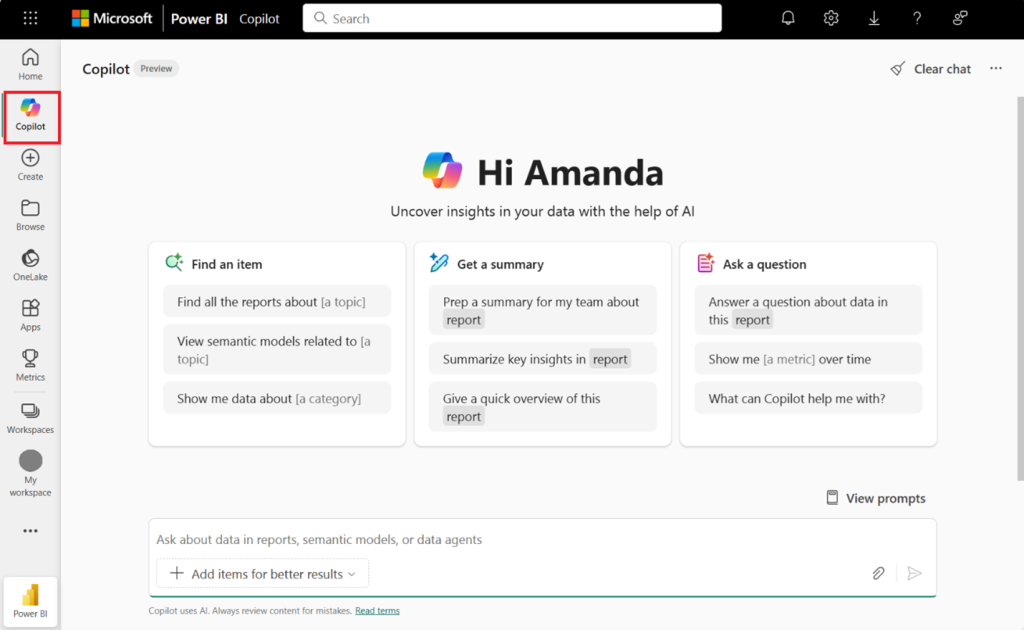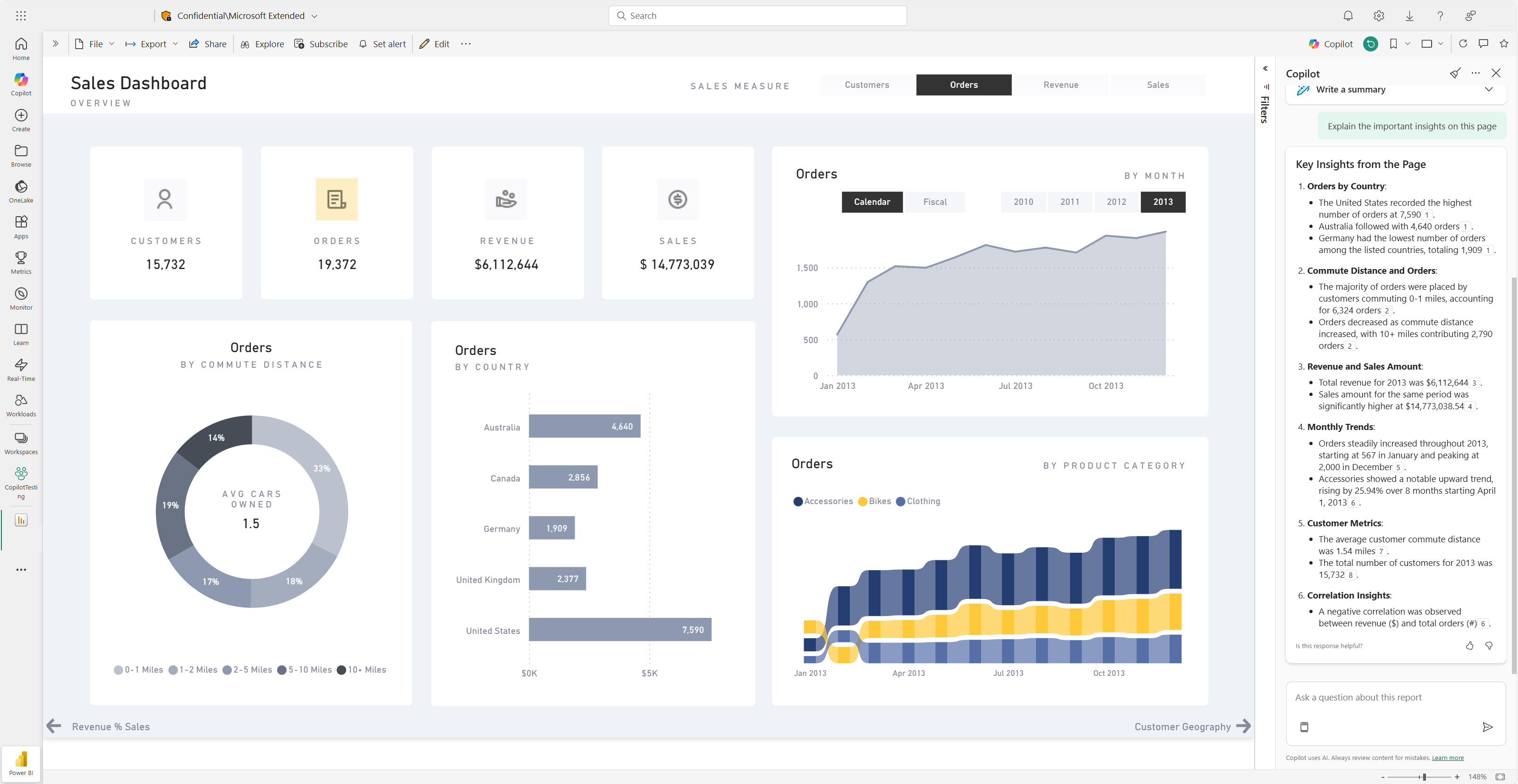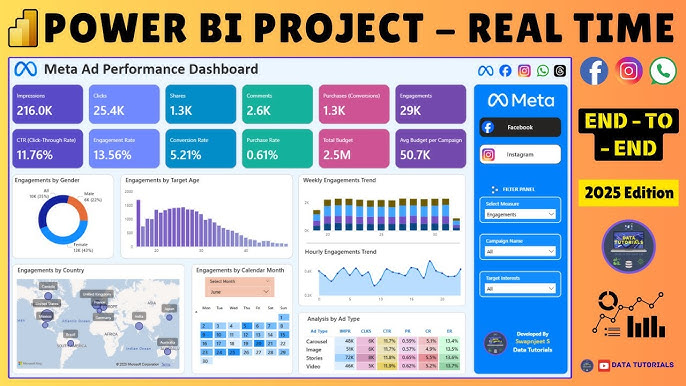PowerBI Copilot Overview

The September 2025 Power BI update marks a transformative shift in how users interact with business intelligence through the introduction of Standalone Copilot as a default-on experience. This full-screen, chat-based AI interface now automatically activates for all tenants with Copilot enabled, providing an intuitive conversational platform to explore data, generate insights, and create reports without complex technical knowledge. Users can simply ask natural language questions about their datasets and receive immediate visualizations, explanations, and recommendations that streamline the analytics workflow. While the system automatically assigns workspaces for users without dedicated Fabric Copilot Capacity, administrators maintain control through opt-out options in the admin portal, ensuring organizations can balance innovation with governance requirements.
Copilot Configuration and Management

The September 2025 Power BI update introduces streamlined Copilot management with precise administrative controls through the Microsoft 365 admin center, where tenant administrators can enable or disable the standalone Copilot experience organization-wide. For users without dedicated Fabric Copilot Capacity, the system now implements intelligent auto workspace allocation, automatically assigning appropriate workspaces while maintaining granular permission controls to prevent access issues. Organizations can now save Copilot-generated explorations directly to Pro workspaces, eliminating previous Premium capacity requirements and democratizing AI-driven analysis across all license tiers. This configuration framework ensures seamless integration with existing Microsoft 365 security policies while providing the flexibility to tailor Copilot access based on departmental needs and data sensitivity requirements.
Copilot Utilization in Data Analysis
Unlock the full potential of your data ecosystem by leveraging Copilot’s intelligent search capabilities that seamlessly integrate with Microsoft 365, allowing you to discover Power BI reports through natural language queries across titles, descriptions, and even specific chart elements. Transform your semantic models into AI-ready assets by utilizing the ‘Prep data for AI’ feature, which enables schema selection, verified answers, and custom AI instructions directly within the Power BI service—particularly valuable for Direct Lake models. Maximize time-based analysis with the enhanced DAX time intelligence functionality that supports custom calendar configurations including fiscal years and 4-5-4 retail calendars, empowering more precise business period calculations through new functions like TOTALWTD and PREVIOUSWEEK.
Report Generation Optimization Strategies

Unlock unprecedented reporting efficiency with Power BI’s September 2025 update, featuring an enhanced Performance Analyzer that operates directly within the web editing environment to identify and resolve rendering bottlenecks in real-time. Achieve up to 65% faster report load times through intelligent visual element prioritization and resource allocation, while the updated semantic model editor enables precise DAX calculation tuning via XMLA endpoints without disrupting user experiences. Field teams can now implement NFC tag integration for instant mobile data access by simply tapping company devices on designated physical locations, creating seamless connections between operational assets and analytics dashboards. This comprehensive optimization framework transforms how organizations generate, refine, and deploy business intelligence across all platforms.
In-depth Analysis of Copilot Key Features

The September 2025 Power BI update delivers enterprise-grade Copilot capabilities through three key technical advancements: First, the enhanced search algorithm prioritizes content marked as ‘Prepped for AI’ by analyzing schema selection, verified answers, and custom AI instructions to deliver contextually relevant results with descriptive captions. Second, the browser-based semantic model editor now supports comprehensive row-level security configurations that automatically govern Copilot data access, allowing administrators to define dynamic data filters using DAX expressions that apply consistently across all AI interactions. Third, the generally available TMDL view provides developers with a code-first workflow for semantic model management, enabling direct editing of model.json files for batch updates, version control integration, and transparent model structure visibility that works seamlessly with both Direct Lake and import-mode datasets. These features collectively establish a robust framework for implementing AI-powered analytics with enterprise-grade governance and developer productivity.
Problem Solving and Limitation Overcoming Methods
Navigate the evolving Power BI landscape with proactive solutions to anticipated limitations as the platform advances. With Bing Maps visual removal scheduled for October 2025, immediately implement Azure Maps integration using custom visuals to maintain uninterrupted geospatial analysis capabilities while preserving existing report functionality. When editing Direct Lake models, leverage Fabric Notebooks’ performance analyzer to prevent data inconsistencies and optimize operations through strategic schema-only or data-only refresh approaches that minimize processing overhead. Resolve the Teams integration challenge by configuring the new tenant setting that ensures Power BI content opens in separate windows, preserving chat context while maintaining seamless collaboration across Microsoft 365 environments.